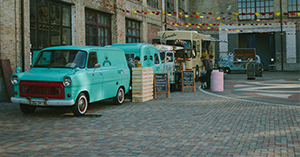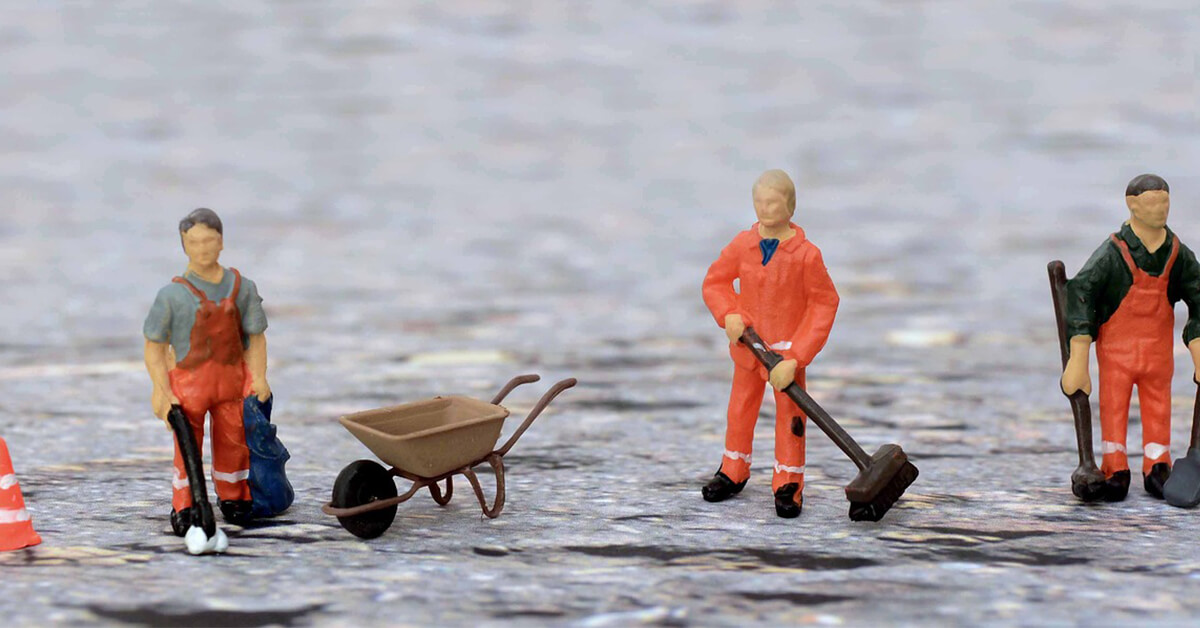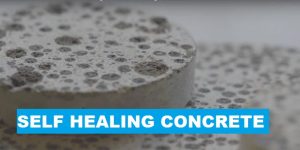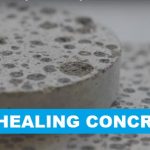Interlocking concrete paving products are manufactured with high quality material and finishing for commercial and residential projects. The paver produced generally uses raw material sourced from locally as part of sustainability ecosystem. And if there is a need to use any imported materials, then it has to be of the best quality. Interlocking concrete pavers are usually designed to provide good resistant to hard-wearing, and these little blocks are also made to provide high durability and strong color retention.
However, as with any type of products, even ICPs needs some basic maintenance to ensure its optimum performance, durability, and aesthetic. Establishing a simple cleaning and maintenance schedule will ensure your ICP pavement looks great for many years to come.
General Tips on ICP Pavement Cleaning
In order to maintain the beauty of your ICP pavement at its best at all time and make your investment worthwhile; you should carry out basic regular cleaning on your pavement. Avoiding this would make your pavers deteriorate pre-maturely and turning it into dirty looking pavement.
Just a regular brushing will suffice to remove the dirt and dust from the surface; however, if you will the colored pavers (red, yellow, etc.) looks like it has been masked by dirt/dust, then you need to use any alkaline base solution (soap water) and brush it with regular floor cleaning stiff brush.
If you’re dealing with light or premium colored pavers (blue, green, etc.), then you probably need to pay a bit more attention on maintaining it. Any dirt or tire marks will look aggravated on these types of pavers compared to darker ones. Therefore, these pavers definitely need extra attention and care.
You also should invest in good pressure washer as the result would be better compared to hand brushing.
Tips on Using a Pressure Washer on Paver
It has been quite common to see a pressure washer in every household; and being used for various kind of cleaning purpose. This magic water machine comes in various sizes and pressure, and there is no set-in-stone kind of rule for which type is suitable for pavement cleaning.
If the pressure washer is used correctly then the paver surface can be kept in excellent condition; however, on the other hand if the pressure is applied directly perpendicularly on the surface then it can be quite disastrous for the paver surface.
For general dirt/dust removal cleaning all you need is a simple pressure washer set at medium pressure. One thing to keep in mind is that, always try to avoid pointing the pressure washer nozzle directly at paver joint area.
This would force the joint filling sand out and it is not going to be good for the overall pavement interlocking property. If unintentionally you have washed out the joint filling sand, then immediately after your cleaning activity fill-up the joint with new filling sand.
- DO NOT point the pressure nozzle perpendicularly to the paver surface
- ALWAYS keep the nozzle at about 30 to 45 degree to the pavement surface
- NEVER point the pressure washer nozzle at the paver joint
- IMMEDIATELY re-fill the joint sand if it was removed accidentally.
Moss, Fungus, Algae on ICP Pavement
This is one thing that almost unavoidable on paver surface, especially on the one laid near the constantly shaded area like adjacent to the building, back lanes of houses/shops, or under trees.
If the formation of these external organic matters are just barely apparent; then just general cleaning using hot water and alkaline based soap/detergent will do the job.
However, if you start noticing a thick layer of growth, then it has to be first removed prior to general cleaning by washing. Use a scrapper and gently remove the layers of moss or algae from the surface.
Try to use plastic scrapper to avoid any deep scratches on the paver surface. Once it is removed, then you proceed with regular cleaning with hot water and alkaline based detergent.
Once done cleaning with the detergent, make sure the surface is thoroughly rinsed with clean water to remove any residual detergent solutions left on the surface. If you wish, you can also use moss/algae cleaner to remove the growth, and these formulated to be used on pavers. However, please be mindful of the instructions when using it on colored pavers. Use it in small area to make sure it is safe.
Alternatively, you can also look into options of buying pavers that is already treated with algae free solutions. These pavers are manufactured with special solutions that prevents excessive growth of algae, moss, fungus.
Weeds, Grass
These happens at the joint area of the pavers and are also quite common especially on paved area that is not frequently trafficked. Just removed it by hand and then treat the joint with weed killer. This should suffice to protect your pavement from weeds/grass growth.
Leaves, Berries, and Fruits
Stains marks caused by the dried leaves or fruits will be quite difficult to remove from paver surface especially from the fruits with strong colors (e.g. dragon fruits). This becomes even more difficult when the stain is left unattended for long periods allowing the stain to penetrate deeper into the surface layer of the pavers.
For this just a general cleaning with water won’t work anymore. You need something a bit more corrosive (not excessive) so that the cleaning solution can penetrate into the paver to bring out the stubborn stains. The simple and easily available solution would to use sodium hypochlorite (bleach) with soap (e.g. baby shampoo, bathing soap, etc.).
Mix water, sodium hypochlorite, and soap at ratio of 36:12:1. Spray the cleaning concoction on the paver surface that need be cleaned (make sure the surface is dampened beforehand) and leave the solution to soak in for about 20 minutes. Use cleaning brush to remove the stains and wash it off with clean water (pressure washer is also advisable).
This is not a magic solution; you probably need to repeat this process several time completely remove the stubborn stains. Also bear mind that the continuous use of this potion on the paver surface may affect the color intensity as well. The deep colored paver may look weathered/dull.
ICP Pavement Cleaning & Maintenance in Winter
During winter, the biggest headache is the removal of snows on the roads and pavements. You can’t just sit and wait till it melts and clears your path, you got to remove it yourself. Most common way is to use de-icing salts to melt the ice away from the driveways, patios, etc.
Though it is an effective and easy method to use de-icing salt on the paver surface to melt and remove the ice layer; you got to take note that these salt will stain the paver surface.
Therefore, it is advisable to wash the surface with water after de-icing to remove the residual salt. This de-icing activity should not be harmful to the paver quality (both aesthetic and integrity) as it is only done occasionally.
Rust Staining on ICP Pavement
The rust stains on paver surface can come from running water off the metal roof gutters, steel railings, tools and furniture’s, etc. The water washes down the steel/iron particles onto the paver surface and leaving rust stain mark on it.
This is stain not like algae or dirt which can easily be removed with just simple cleaning. Usually, the rust stain will penetrate into the facing layer, and it can be quite difficult to remove. Furthermore, as the pigments used in the making of the paver contains iron oxides, usage of any chemical cleaning product could affect the color as well.
First, you can try with lemon juice. Just squeeze fresh lemon juice directly on the rust stain. Let it to soak in for about 10 minutes, then use a stiff brush to brush off the rust stain. Clean the surface with clean water once you complete the “lemon-cleaning” process. If necessary, you may need to repeat it few times. However, this method only practical if the affected area is rather small. You can’t be going around squeezing lemon juice on a large area.
The second method is to use vinegar, only use the clear ones so that you don’t leave new stain from vinegar. Similar to earlier method, apply it on affected area and leave it to soak in before brushing it off with stiff brush.
These are two ways you can try to remove any rust stain marks on the paver. However, preventive is always better than corrective; so the first step should be to avoid the formation of the rust stain.
Oil Stains
Concrete is generally a porous material; therefore, any liquid spill on paver surface will penetrate pretty quickly into the surface layer, and same goes to oil as well. If noticed immediately, you probably can just use paper towels, cloths, etc. to just absorb the oil off the paver surface.
Even if you’re using cloth or paper towel, avoid wiping it as this would spread the oil to a larger area. If the towel does not complete the job, and you can still see the stains, then you could use similar method that was suggested for the removal fungus. That is to wash the surface with mixture of detergent and hot water.
However, please bear in mind that it is impossible to completely remove the oil stains from the paver surface, especially the one stained by colored oil.
 Also where the pavers laid near food preparation area; then it unnecessary to try to remove the oil stain. If it becomes visibly unbearable, then the only solution is to replace the stained pavers.
Also where the pavers laid near food preparation area; then it unnecessary to try to remove the oil stain. If it becomes visibly unbearable, then the only solution is to replace the stained pavers.
Tire Marks
This should not be a big concern as pavers are designed to be used for traffic and it is expected to have tire marks. However, if the pavers laid near the drop-off area or assembly and accessed by vehicle occasionally, then this tire mark could be unsightly. Furthermore, it only becomes very obvious on light colored pavers.
You can use detergent and hot water to clean it, and in most cases it should do the trick. You also could use pressure washer instead of just plain hose.
Soft Drinks (also include beer and wine)
This is rare and accidental situation (nobody going to pour their drinks purposely on the paver to stain it); and when it happens, just wash and scrub the area with detergent and hot water. Then rinse it off with clean running water. You’re done.
Chewing Gum
This is one SUPER BAD stain to remove. Countries like Singapore even ban the selling and eating of chewing gum in their country.
It is not easy to remove it from the paver surface. You probably can try to remove the newly spitted gum with the scrapper, but removing the old ones is like almost impossible.
For the old gum stains, you probably need to freeze it or hot steam it, and chiseling. Trust me it’s really not worth the effort.
Just remove and replace the gum contaminated pavers with new one.
Paint Tainted ICP Cleaning & Maintenance
This is another type of stain that very difficult to remove and not worth the effort.
If the stain is from water base paint, then you could try using cloth or paper towel to absorb it (don’t wipe). However, if it is oil base paint then just forget it; don’t even bother trying to clean in.
Our advice would be to just remove and replace the paint tainted pavers with new one. Trust us, this is much better option commercially as well compared to the cleaning method.
Seal the Pavers
Can I just seal off my paver surface to avoid all this cleaning headache?
Off course you can, but that doesn’t mean that pavers become maintenance free.
Pavers surface are usually sealed with a resin/polymer base material. It prevents the paver from getting dirty, weed growth (only if the joint also sealed off), and boosts the color intensity as well as the overall appearance. The polymer (acrylic) sealer once applied creates a thin layer on the face layer of paver surface and joints. This eliminates the external stains from penetrating into the paver.
However, the use of the sealant may also reduce the slip/skid resistance value of the pavement. It means the pavement becomes much more slippery compared to the normal ones. This should not be an issue during normal weather; however, in the rainy days or during winter, this becomes a hazardous for pedestrian (or even cars).
Usually, the sealant application is done by third-party contractor (not the paver manufacturer). Therefore, always check with sealant manufacturer and supplier on its suitability for your pavement. Just a quick reminder, don’t use sealant for permeable paver.
Health and Safety Matters
Though this article aims at providing a simple guideline on paver maintenance; it still involves the use chemical cleaning products, solvents, polymers, etc., which could be potentially dangerous for certain individuals in not handled properly. We strongly suggest you consult with the manufacturers and suppliers of those chemicals before using them.
Other Precautions:
- Test the chemicals for effectiveness in small area before going for bigger area.
- Ensure all the safety precautions are in-place before handling any chemicals.
- Ensure adequate ventilation if using chemicals
- Cover adjoining surfaces to prevent overspill and damage
- Always follow the manufacturer’s instructions and wear protective clothing especially when handling any chemical solutions, sealants, etc.
- Avoid overly aggressive scrubbing as this could damage the paving
Summary
Hope that the tips, advice, recommendations provided here will help you as a general guideline in maintaining the interlocking concrete pavement surface. This are not definitive guide, and sometimes you need to check with the original paver manufacturer on their specific guide and recommendations to upkeep the paver.
If you know any other way of cleaning and maintaining pavers, do share with us in the comment section below.











